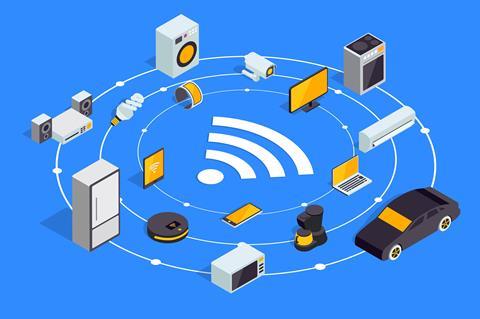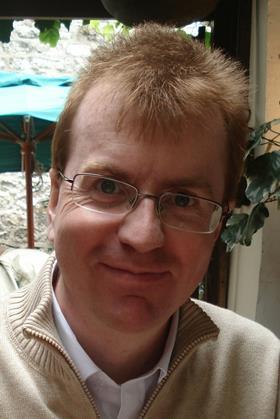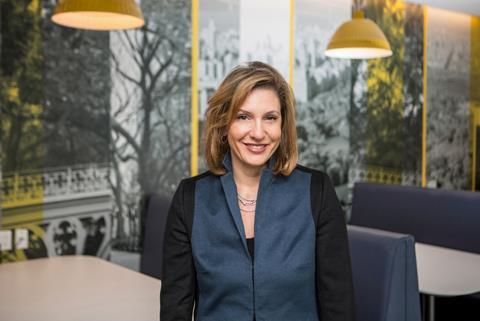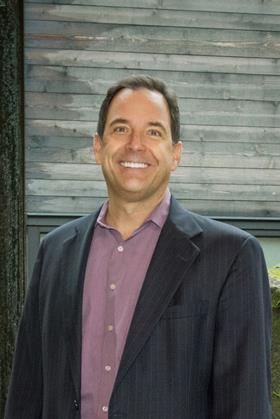Broadcasters and other content creators will have much more consumer data to draw on as a result of the internet of things. But how to negotiate the new security challenges and avoid the danger of ‘digital fatigue’?

Sometimes a technological revolution can begin and it’s only when it has achieved significant traction that it enters the landscape of the mainstream media.
Such has been the case with the internet of things (IoT), which is already a global phenomenon and is expanding rapidly; for instance, research company Gartner recently predicted that 25 billion connected devices will be in use by 2021.
Whether it be in the home or a professional environment such as broadcast, the benefits of a fully connected ecosystem can be divided into primary groups: control and data/information.
In the domestic space – where much of the media focus has been directed to date – IoT will allow everyday appliances as well as systems for lighting, heating, security and more to be accessed and controlled from devices including smartphones and smart speakers.
- Read more: BBC Box rewriting the future of the internet
If the impact on the public of IoT is relatively clear, its implications for professional applications are harder to predict.
For a start, a sizeable majority of vendors contacted for this article said they were unable to comment on IoT at present on the grounds that their activities in this area are at a relatively formative stage. But whilst it might be too early to talk about individual company strategies in depth, there is no doubt that the data-harvesting potential of IoT holds great opportunities for content creators.
Accenture is a company that has conducted extensive research around the IoT.

Liam Friel, solution lead for connected products for communications, media and technology, pinpoints some of the opportunities arising from IoT deployment: “Broadcasters can use these insights to determine the type of content – and the format – that should be commissioned to ensure the highest levels of engagement from the audience. In addition, the data insights create an opportunity to better target advertising in a more granular way, so that different householders can be watching the same video content but seeing different adverts during the commercial break based on their viewing habits. Advertising is another type of content to be delivered, and it’s important to deliver the right, most impactful advertising content to the right users.”
‘Understanding what is being watched’
According to Friel, IoT will facilitate a significant deepening of consumer data. “Traditionally, understanding consumer consumption was done using panels to provide insights in aggregate,” he says. “But now connected devices can provide accurate data about how an audience is engaging with content: when they watch, what they skip, when they abandon shows, and so on. But that data can offer much more than just viewing habits.”
Extracting data across multiple channels and devices will give content creators the greatest opportunity to form a rounded picture of viewers’ preferences. Friel explains: “Platforms which serve content across multiple channels and devices can also measure how consumers interact with content, and advertising on that content, and [how they] related to that content across multiple channels.”
If there is no doubt about the dramatic uplift in the volume of data, then the challenges for content creators in managing and processing this data are similarly undeniable. One aspect of this involves increasing fears around data protection, which have been given new impetus by fresh regulations and a spate of scandals around data-breaches. Another revolves around the need to create new processes that allow the data to be interpreted in a meaningful way and fed back into the development of new services.
“Broadcasters can use these insights to determine the type of content – and the format – that should be commissioned to ensure the highest levels of engagement from the audience.” Liam Friel, Accenture
EY is another organisation to have conducted deep-level research around IoT. Janet Balis, global media & entertainment advisory leader, observes that “most companies have a tremendous volume of touchpoints with consumers, all of which generate data. However, most [of them] are not taking full advantage of the arsenal of actionable insight that they can use if they take an integrated view of the consumer journey and truly ‘connect the dots’.

“The technological, organisation and even political silos are formidable, but if we can overcome them we can see the consumer holistically and understand them through consumption and behavioural data, demographic and attitudinal parameters, and even transactional or commercial actions.”
It may help to perceive IoT, indicates Balis, as an enabler – and one that encompasses everything from mobile devices and wearables to autonomous vehicles. “The key to extracting the value from consumer data, including IoT, continues to be a meaningful commitment to the heavy but critical life of bringing consumer data to a place of utility,” she says. “Used intelligently to inform content and experience, consumer data across the organisation can become a platform of tremendous competitive advantage, even in highly decentralised brand structures.”
Early days
The sense that broadcast and media manufacturers are only starting to get to grips with IoT is underlined by the fact that, of 10 companies approached for this article, only a couple were willing to comment on IoT at this point.

Audio manufacturer Biamp highlights the potential of IoT-related data in applications including conferencing and networked video installations. But ultimately, says Joe Andrulis, all developments will have to be “driven by the user experience. The emphasis has to be on what we can bring to the consumer, with [trends like IoT] being part of how we deliver it.” Andrulis does not go into detail about specific product developments, but confirms that the company continues to be “furtive ground for new launches… We live on new product introductions.”
Mark Childerhouse, director of Pioneer Group, points to the role of “developments in-home technology” in informing expectations for professional markets such as broadcast.
For all stakeholders, perceiving every connected device as an access point, and managing them accordingly, is crucial; beyond that IoT represents a great opportunity as it can “provide an extremely consistent, immersive experience which, when integrated properly, can be seamless and straightforward to manage and update. It also provides an opportunity to add additional devices easily across a wireless network.”
Security concerns and ‘digital fatigue’
Concerns about a shortfall in security precautions between consumer and professional devices have led to the suggestion from some quarters that there may need to be an independent organisation to establish IoT standards. For now, the emphasis is on individual vendors and integrators to provide reassurance about security.
“A combination of high-profile customer data breaches, as well as regulatory changes around the world, certainly put the security agenda at the fore of most well-run companies,” says Balis.
“IoT likely is just another dimension of complexity on that security equation, particularly as security protocols for IoT-enabled devices are at reasonably low-level maturity in terms of individuals’ understanding of their actions and potential risks.”
“High-profile customer data breaches, as well as regulatory changes around the world, put the security agenda at the fore ” Janet Balis, EY
One of the other potential challenges may yet prove to be more intractable.
According to a newly published EY global study, Decoding the Digital Home, nearly half of respondents (45%) are actively seeking time away from their smartphone and other internet-enabled devices – a figure that rises to 53% in the 25-34 age group.
Hence there is a very real concern about what EY describes as ‘digital fatigue’, and both manufacturers and broadcasters would be well-advised to temper their expectations of IoT in the context of what could be a longer-term behavioural shift.



























No comments yet